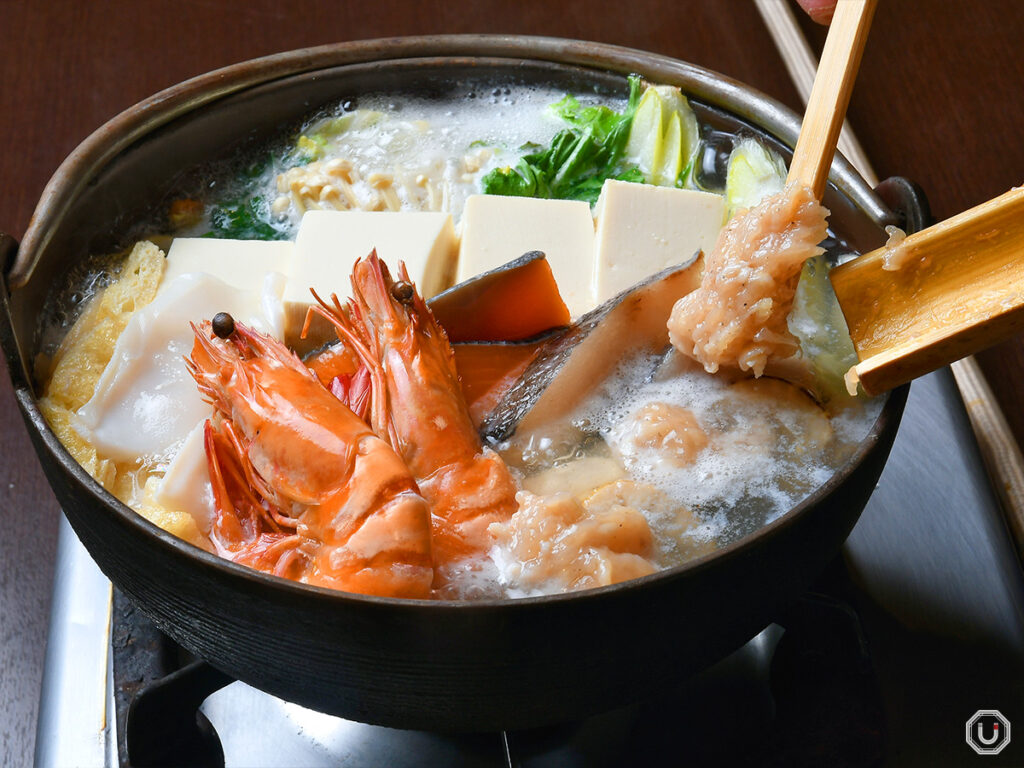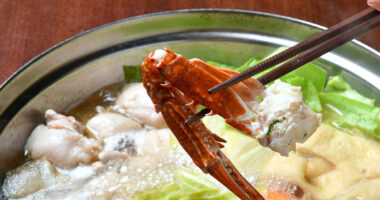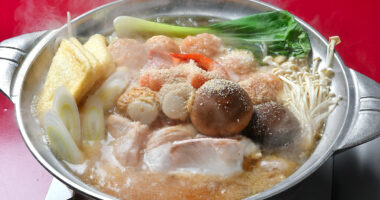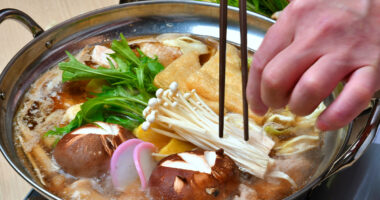Sumo is considered Japan’s national sport, and the Ryōgoku area of Tokyo is home to the Ryogoku Kokugikan, where sumo tournaments are held. As a result, the area is known for its many chanko nabe hot pot restaurants.
“Chanko” refers to the meals eaten by sumo wrestlers. Among these, hot pot dishes are especially common, so in Japan, the word “chanko” has come to generally refer to hot pot.
Since its founding in 1974, “Chanko Edosawa” has specialized exclusively in chanko nabe. Founded by a former sumo wrestler, the restaurant serves authentic chanko hot pot.
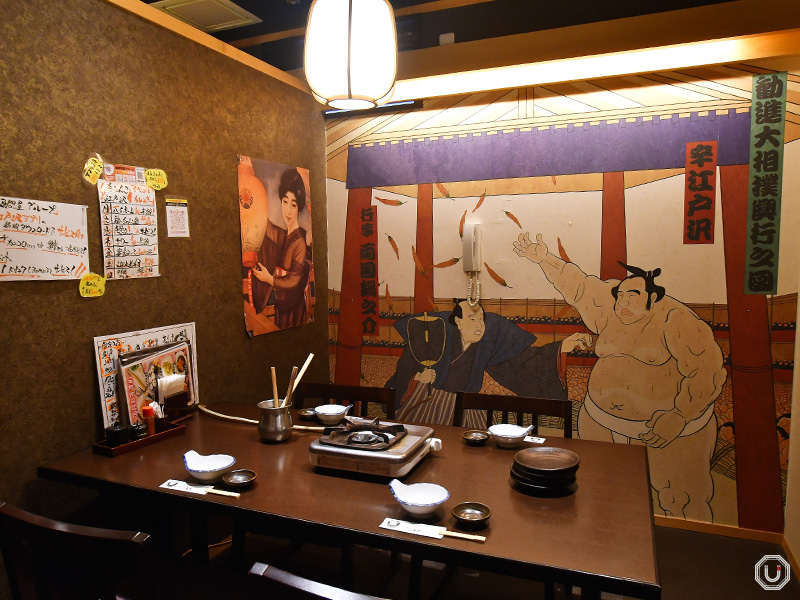
Located just a short walk from JR Ryogoku Station, Chanko Edosawa’s main branch in Ryogoku is a four-story restaurant with a total of 290 seats, making it suitable for everyone from solo diners to large groups.
The walls are decorated with ukiyo-e (a genre of Japanese art that flourished from the 17th through 19th centuries) prints depicting scenes of sumo wrestling, creating an atmosphere full of Edo-period charm.
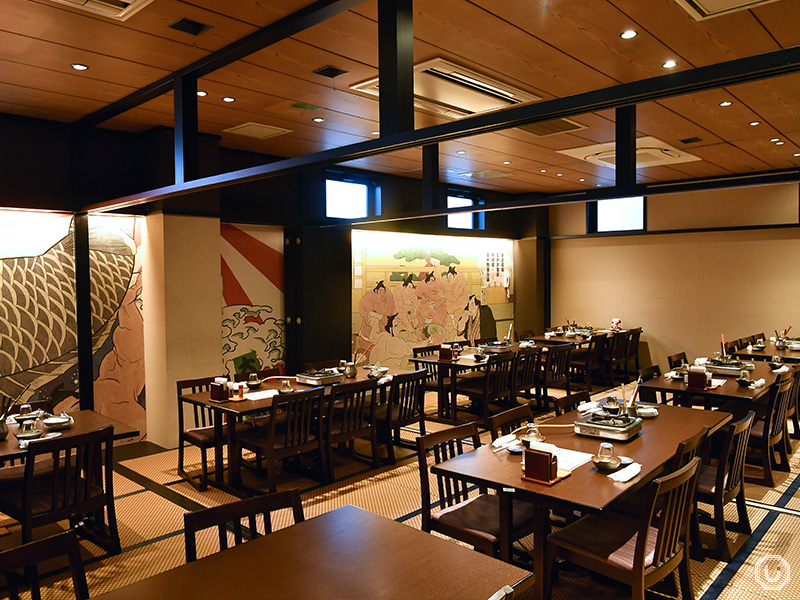
Proudly serving soppu-daki broth—Chanko Edosawa’s signature hot pot dish
So, just why are hot pots such a common meal in sumo stables?
It’s said that hot pot is popular because it allows for a balanced intake of meat, vegetables, and other nutritious ingredients all in one dish.
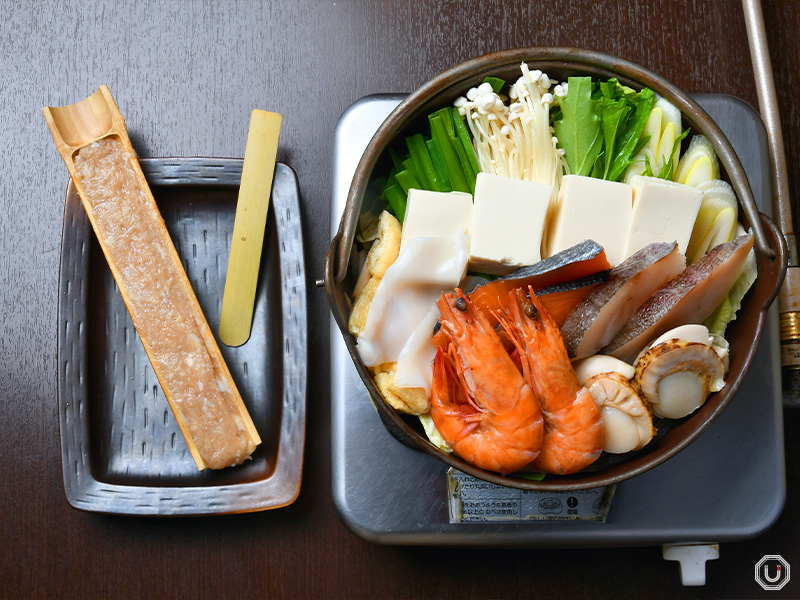
“海鮮ちゃんこ鍋,” Seafood Sumo Stew (photo shows serving for 2) 2,838 JPY per person (tax included)
Chanko Edosawa offers three types of chanko hot pot: the “Seafood Sumo Stew,” the “Chicken Sumo Stew,” and the “Ōzeki Chanko Sumo Stew,” which features both chicken and pork (Ozeki refers to the second-highest rank in sumo after Yokozuna).
This is the Seafood Sumo Stew, packed with white fish, salmon, squid, shrimp, scallops, around 12 kinds of vegetables, tofu, and their special chicken meatballs.
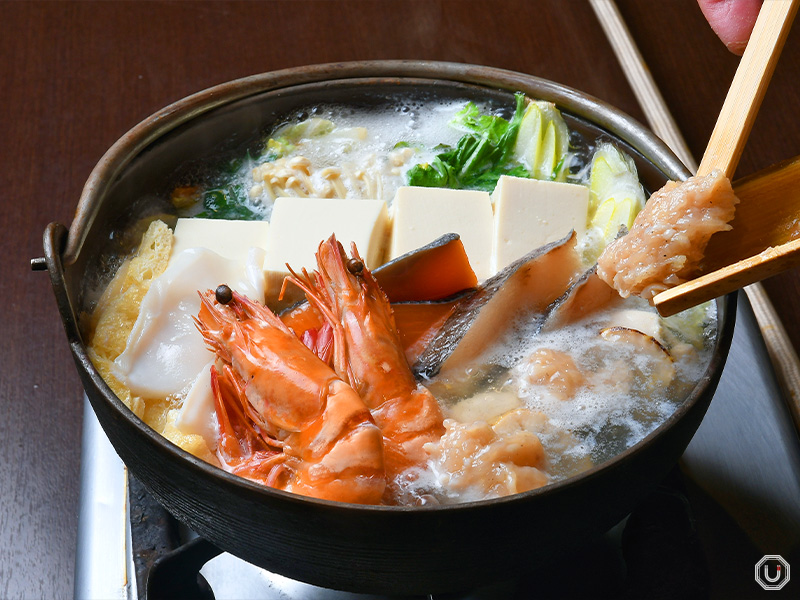
All the ingredients except for the tsukune (chicken meatballs) are served already set in the pot. When the soup starts to boil, break the tsukune into bite-sized pieces and add them to the pot.
Chanko Edosawa’s specialty is their soup. In keeping with the sumo rule that you lose if your hand touches the ground, meat from four-legged animals like pork has traditionally been avoided, so chicken has typically been the main meat used in chanko.
That’s why the broth here is made using chicken—especially richly flavored hinedori (mature chicken)—and is prepared using a traditional method called soppu-daki (slow simmering of bones).
The soup, carefully simmered every day over time, is very clear and pure, with a deeply rich flavor that is truly captivating.
You can choose from three types of soup seasoning: soy sauce, miso, or salt, and whichever you select, the base chicken broth’s rich flavor and aroma shine through beautifully.
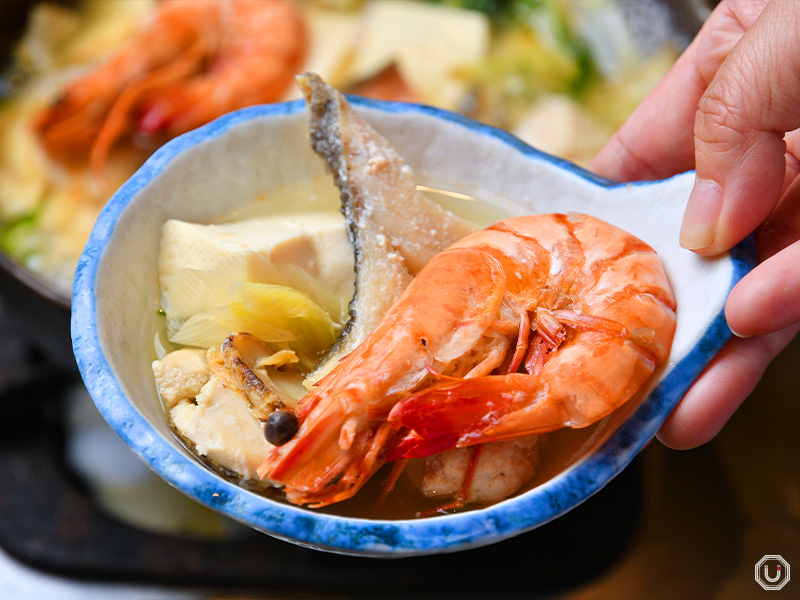
After simmering for about 20 minutes, your chanko nabe is ready to eat.
The chicken broth has no unwanted odors and is beautifully infused with the seafood’s umami. The vegetables—like Chinese cabbage, bean sprouts, garlic chives, and green onions—bring balance and freshness.
The large pieces of seafood provide an incredibly satisfying bite! You can order additional ingredients if you like, and finishing dishes are also recommended.
For the finale, you can choose from three options—zōsui (rice porridge), udon, or ramen—all available for an additional charge.
Ozeki Sumo Stew: the most popular dish packed with premium ingredients
Currently, the most popular hot pot at Chanko Edosawa is the Ozeki Sumo Stew.
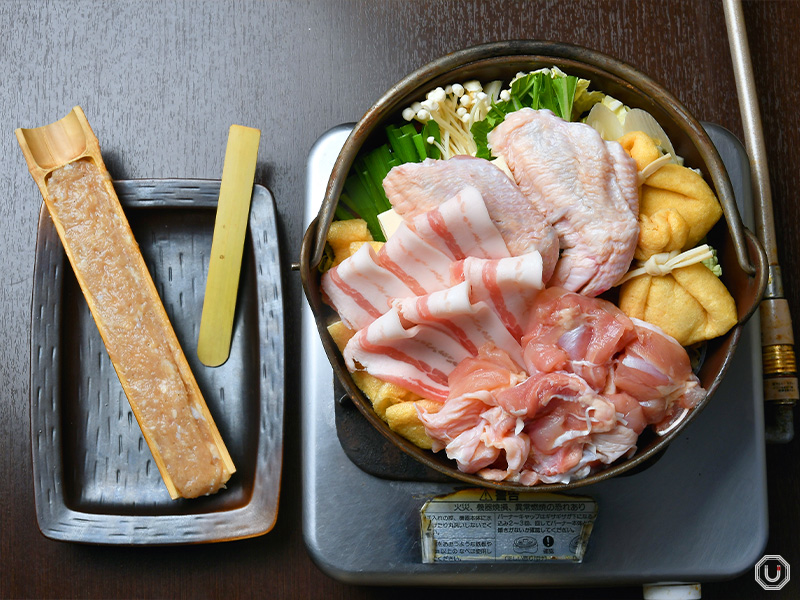
“大関ちゃんこ鍋,” Ozeki Sumo Stew (photo shows serving for 2) 2,838 JPY per person (tax included)
As mentioned earlier, chanko hot pots are typically made with chicken. However, the Ozeki Sumo Stew features both pork and chicken. What’s more, it includes three types of chicken—thigh meat, chicken meatballs, and chicken wings—making it a truly luxurious option.
Another unique feature is the inclusion of mochi kinchaku (pouches of deep-fried tofu filled with rice cakes).
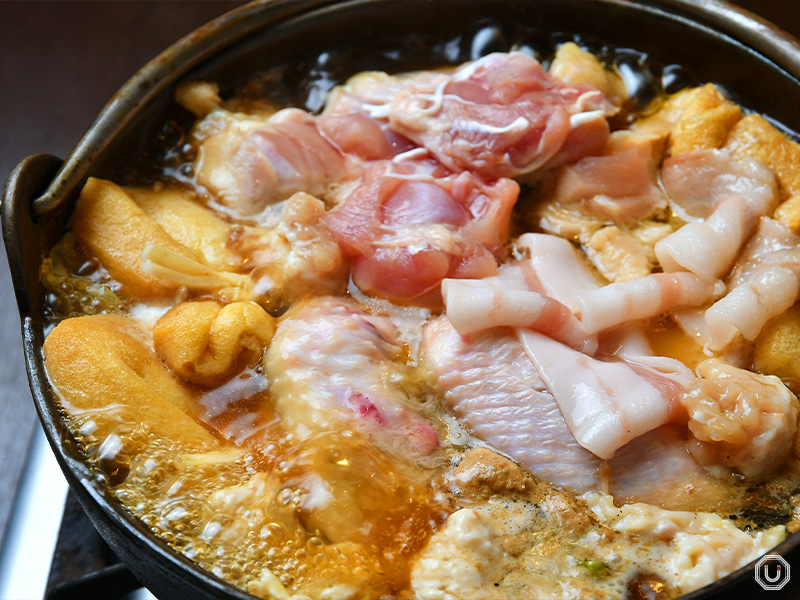
For the Ozeki Sumo Stew, the soy sauce-based broth was selected from the three available flavors.
This broth, made by blending light and dark soy sauces in a unique ratio, allows the umami of the meat and vegetables to melt into the broth as they simmer, creating a harmonious and well-rounded taste.
In particular, this hot pot has a bold and savory profile thanks to ingredients like pork belly and chicken wings, giving it a completely different taste from the Seafood Sumo Stew.
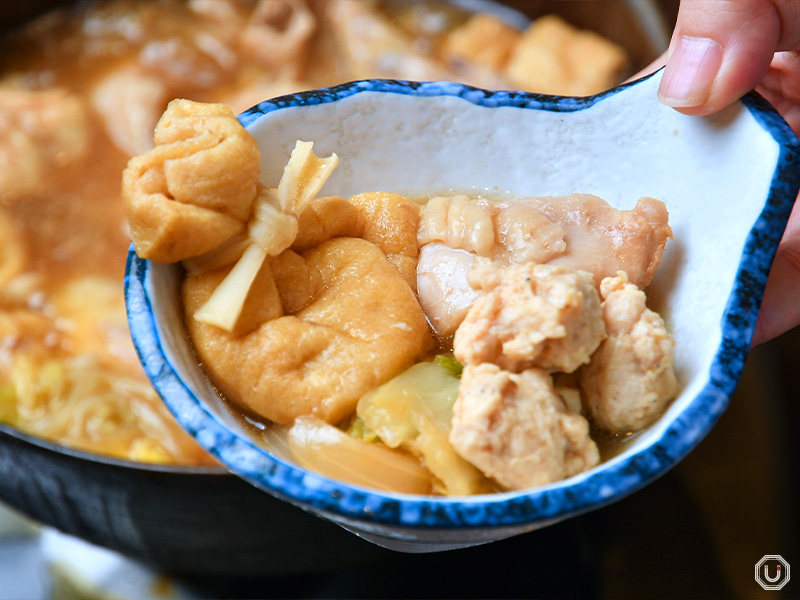
Mochi kinchaku will dissolve if overcooked, so it’s best to eat them early once they’re heated through.
Packed with juicy chicken thigh and meatballs, this chanko nabe is a must for meat lovers. The generous portion of vegetables also makes it a healthy option.
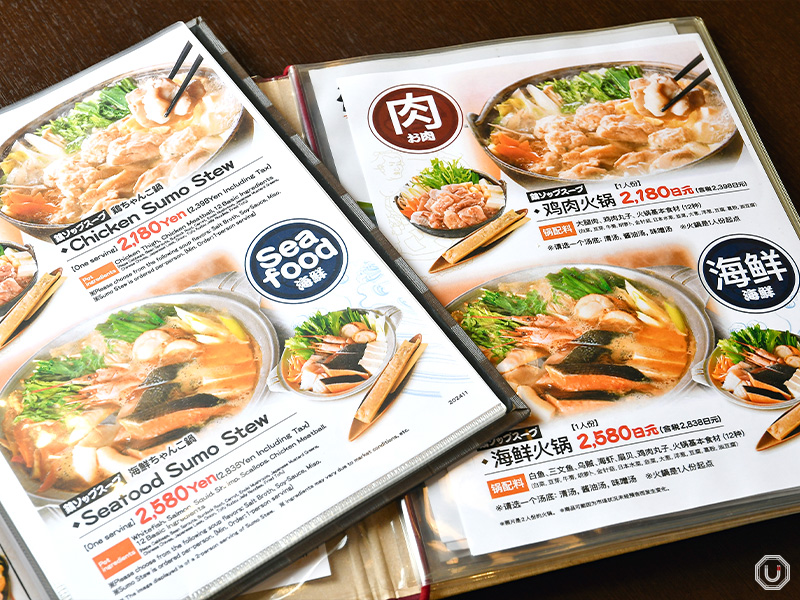
Menus are available with Japanese, English, and Chinese languages, so international visitors can order with ease.
At Chanko Edosawa, you can enjoy delicious chanko hot pot in an atmosphere full of traditional Japanese charm. Why not treat yourself when watching a sumo tournament or touring Ryogoku?
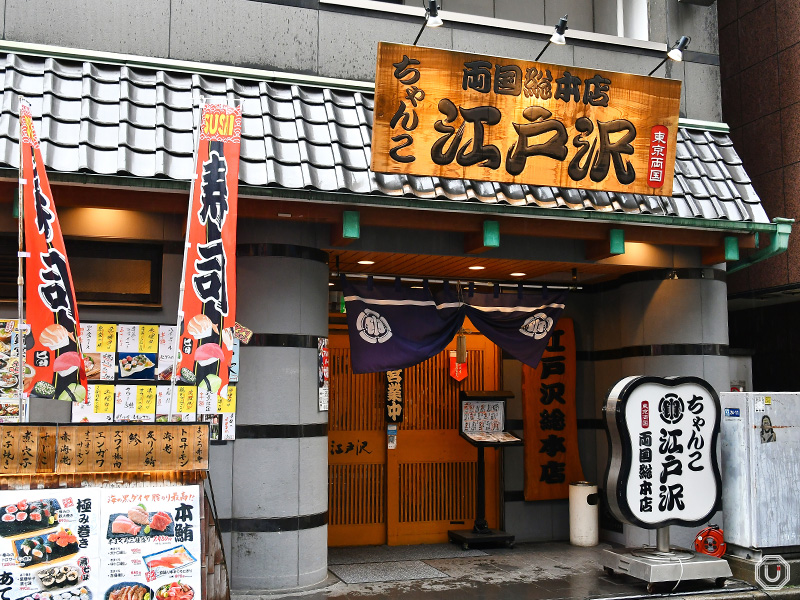
Information
| Store name | ちゃんこ江戸沢 両国総本店 Chanko edosawa ryougoku souhonten |
|---|---|
| Address | 3-24-11 Ryōgoku, Sumida-ku, Tokyo
|
| Access |
Ryōgoku Station 1-minute walk from Ryōgoku Station East Exit
Ryōgoku Station 3-minute walk from Exit A4
|
| Phone number | 03-5600-1011 |
| Reservations | Accepted Phone, official website, Tabelog, Hot Pepper Gourmet |
| Payment |
|
| Service charge/Table charge | None |
| Hours | Mon-Sat. 11:30-15:00, 17:00-23:00 Sun. & nat’l holidays 11:00-21:30 |
| Closed | No holidays |
| Seating | 290 table seats |
| Smoking | All seats are non-smoking |
| Official website | https://ys-holdings.co.jp/edo/ |
| Other information |
|
※Menu contents, prices, store information, etc. are current as of May 2025.
